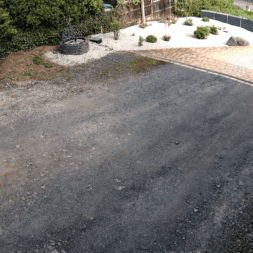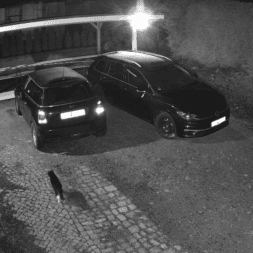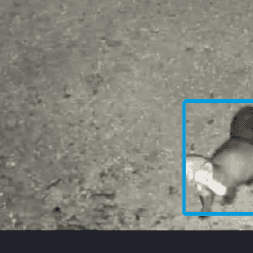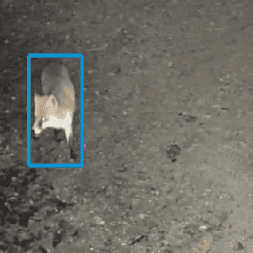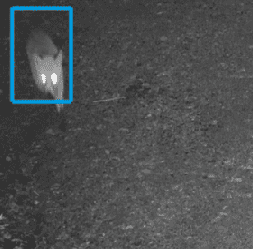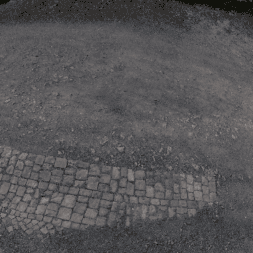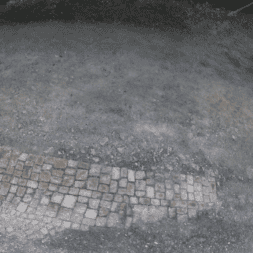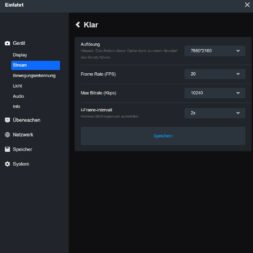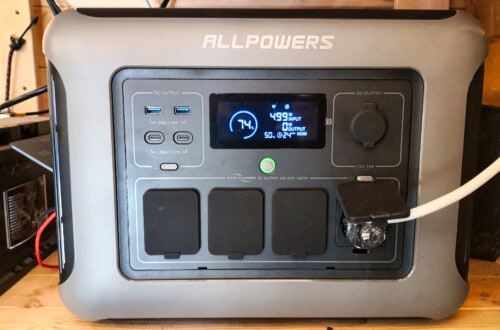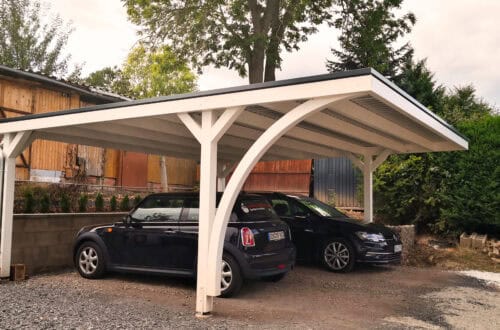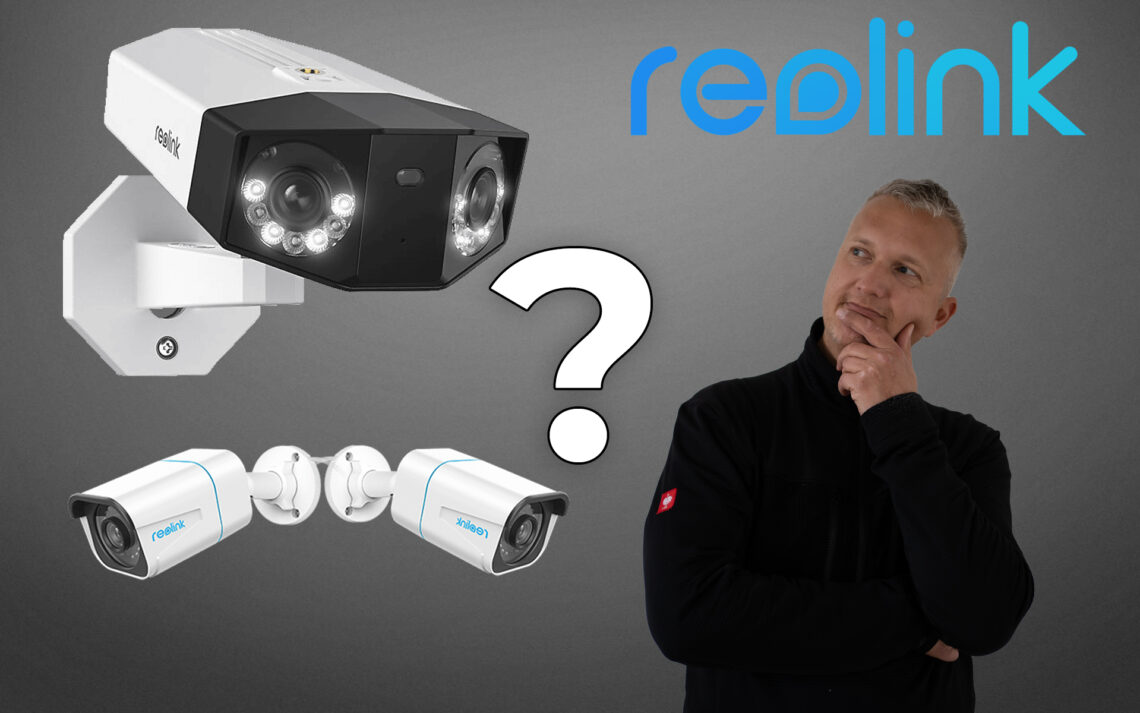
Reolink Duo 3 PoE surveillance camera tested against 2 RLC 810A
In my latest smart home project, I replaced my two Reolink RLC-810A cameras with the Reolink Duo 3 PoE surveillance camera with dual lens.
I was particularly interested in whether the 180° detection of the Duo 3 PoE could actually improve the monitoring of my driveway and carport.
With its 16-megapixel resolution and 2-way communication capability, the Duo 3 PoE promised superior technology and more comprehensive security. But would all the effort and financial investment really be worth it or were the two old camera models better?
I would like to explore these questions in this blog post.
Why 180° panoramic video surveillance makes sense
In my latest project, I was faced with the challenge of improving the security of my property.
The two previous Reolink RLC-810A security cameras were monitoring my driveway and carport, but they left a blind spot right between the cameras.
In principle, I was able to monitor this dead center with another camera, but I had long wanted to monitor the entire area without any gaps. where I spend a lot of time.
This led me to wonder if an upgrade to a more advanced camera with a 180° angle of coverage could bring a significant improvement.
I opted for the Reolink Duo 3 PoE, a surveillance camera with 16MP resolution and additional features such as built-in speakers and microphone that enable 2-way communication – a significant advancement over the RLC-810A, which only has a microphone.
The installation of the Duo 3 PoE promised to close the gaps in surveillance and motion detection, leaving no more blind spots.
With two lenses that together cover a horizontal viewing angle of 180°, the new camera offered a comprehensive solution on paper.
But how would this work in practice? Could this technology really make the difference and effectively improve the monitoring of my property?
Reolink RLC-810A in comparison with the smart Duo 3 PoE camera
The Reolink Duo 3 PoE is characterized by its high resolution of 16 megapixels and offers the possibility to fully monitor critical areas with a horizontal coverage angle of 180 degrees.
In contrast to the RLC-810A, the Duo 3 PoE enables 2-way communication via integrated loudspeakers and microphones, while the RLC-810A is only equipped with a microphone.
When I decided to replace two Reolink RLC-810A surveillance cameras with a Reolink Duo 3 PoE, the extended horizontal angle of view of the Duo 3 PoE was the main deciding factor, as it can cover a larger area.
The Reolink RLC-810A offers solid performance with a resolution of 8 megapixels, providing clear image quality.
Although its viewing angle of 87 degrees covers a good area, not all areas can be completely monitored with just one camera.
In addition, this camera has advanced night vision capabilities and supports Power over Ethernet (PoE), which simplifies installation by transmitting power and data via a single cable.
The Reolink Duo 3 PoE, on the other hand, equipped with two integrated lenses, offers a horizontal viewing angle of 180 degrees and thus enables much more extensive surveillance without blind spots.
Each lens has a resolution of 8 megapixels (16MP in total), so that together they also offer high UHD image quality. In addition, the use of PoE also makes installation easier with this model.
A possible disadvantage of the Duo 3 PoE could be its size and the somewhat more complex setup compared to the simpler RLC-810A.
The larger dimensions of the Duo 3 PoE result from the need to integrate two camera lenses, which also places greater demands on the mounting.
The disadvantages of the RLC-810A, such as the limited viewing angle, can be partially compensated for by using several cameras, but this leads to higher costs and more complexity in the system.
With the Duo 3 PoE, the disadvantage of size can be minimized by carefully planning the mounting position so that the camera is effectively positioned and covers the desired surveillance area.
To summarize, the Reolink Duo 3 PoE offers significant advantages over the RLC-810A due to its extended viewing angle and additional features such as two-way audio.
The decision to replace two RLC-810A cameras with a Duo 3 PoE makes sense from both a technical and an economic point of view, especially if comprehensive monitoring of a larger area with fewer devices is required.
The Duo 3 PoE’s integrated features and extended surveillance range help to make security more efficient and effective and deter intruders, justifying the initial extra cost of the camera’s more complex installation and larger build.



PoE: advantages and disadvantages for surveillance cameras
Power over Ethernet (PoE) is a technology that makes it possible to transmit electrical energy together with data via the conventional Ethernet cable.
This feature is often used in network devices such as surveillance cameras to simplify installation and eliminate the need for separate power lines.
When installing surveillance cameras, such as the Reolink RLC-810A and the Reolink Duo 3 PoE, PoE offers significant advantages. Both cameras support PoE, which means that they can receive power and data via a single network cable.
This significantly reduces the complexity of cabling and facilitates installation in locations where no power connections are available.
Technically speaking, devices such as the Reolink RLC-810A and the Reolink Duo 3 PoE require a PoE power supply in accordance with the IEEE 802.3af standard, which supplies up to 15.4 watts per port.
This is sufficient to operate most surveillance cameras effectively. The cameras themselves are designed to consume minimal power while delivering high-resolution video streams.
However, there are also disadvantages to using PoE. The main limitation is the power limit per port, which can be a problem especially with more power-intensive devices.
The range of the Ethernet cable can also have a limiting effect, as the current strength can decrease with increasing cable length, which can lead to reduced performance or even failures.
However, these disadvantages can be minimized by careful network planning and the use of suitable hardware.
To overcome the range limitation, PoE extenders can be used to amplify the signal and extend the range without any loss of performance.
In addition, the total power provided via PoE should be closely monitored, especially when using several devices on one switch.
Both PoE switches and PoE injectors are used in my network.
PoE switches are particularly advantageous here, as they can supply several PoE devices with power via different ports. This is efficient and reduces the number of power sources required.
PoE injectors are used to connect individual devices without built-in PoE support. This combination of switches and injectors offers a flexible and expandable solution for network management and power supply.

- Optimale Verbindung: Erweitern Sie Ihr Netzwerk mit einem Linksys Gigabit-Switch, um mehr Geräte zu verbinden. Nutzen Sie eine schnellere, stabile Verbindung mit Datenraten von bis zu 1000 Mbit/s
- Highspeed-Datentransfer: Reduzieren Sie Störungen sowie die Datentransferzeit und streamen Sie Dateien mit hoher Bandbreite. Führen Sie Server-Backups im Netz über eine zuverlässige Verbindung aus
- Smart Netzwerk-Switch: Die Ports mit Auto-Sensing-Funktion optimieren die Datenrate der verbundenen Geräte. Durch Bandbreitenerweiterung ist das Netzwerk weniger überlastet und effizienter
- Energieeffizient: Die Abschaltfunktion deaktiviert nicht genutzte Ports automatisch. PoE+ erfordert nur ein Kabel zur Übertragung von Daten und Strom
- Plug-and-Play: Der Unmanaged Switch erweitert Ihr Netzwerk sofort. Eine Konfiguration ist nicht erforderlich. Er lässt sich auf dem Schreibtisch oder an der Wand platzieren
Storage space – SD card or NVR?
The Reolink surveillance cameras, including the RLC-810A and Duo 3 PoE models, offer various options for storing image recordings.
Both models support storage on an SD card directly in the device as well as the use of a Reolink network video recorder (NVR). I personally use the Reolink RLN36 model.
I decided to use both storage methods in parallel to create a redundant system that protects my recordings against both system failure and theft of the cameras.
Technical and financial requirements
The use of an SD card requires that the camera has a corresponding slot, which is the case with both models. The cost of SD cards is relatively low, but varies depending on the desired storage capacity and speed.
Another aspect is that the cards have to be maintained regularly, for example by checking the integrity of the data or replacing the card after a certain number of write cycles.
The use of a Reolink RLN36 NVR (Network Video Recorder) requires that such a device is additionally purchased and configured.
This solution is initially more cost-intensive than the use of SD cards, but offers extended functions such as centralized management of several cameras and often larger storage capacities.
The Reolink NVR must be installed in a secure area to protect against theft, which requires additional placement and security considerations.
Advantages and disadvantages
The advantages of the SD card lie in its simplicity and autonomy. Each camera can record independently of network connections, which is particularly advantageous in the event of network failures.
However, the storage space is limited and the cards can easily be stolen or damaged in the event of physical attacks on the camera.
The Reolink RLN36 NVR, on the other hand, offers the advantage of centralized storage, which simplifies data management and readout.
The recordings are also more secure against direct access. However, one disadvantage could be the dependence on a stable network connection, without which the cameras cannot send any data to the NVR.
Comparison and reduction of disadvantages
Using SD cards and an NVR in parallel, as I do, combines the advantages of both storage methods and minimizes their disadvantages.
The redundancy provided by two independent systems backs up the recordings twice, so that if one system fails, the other continues to function.
To minimize the disadvantages of SD cards, regular maintenance and inspection of the cards can be carried out to prevent data loss.
The reliability of an NVR can be further increased with an uninterruptible power supply (UPS) and regular backups.
This combination allows me to comprehensively secure my surveillance recordings and ensures that I can access the stored data at any time, even if one of the storage options fails or is compromised.

- FUNKTIONIERT NUR MIT REOLINK IP-KAMERAS: Funktioniert perfekt mit allen Reolink PoE 16MP/ 12MP/4K/5MP/4MP Kameras und Reolink WiFi-Kameras mit Gleichstromversorgung, wieTrackmix PoE, RLC1224A, Doorbell PoE und bestimmte batteriebetriebene Wi-Fi-Kameras (Argus PT Ultra, A3 Pro, A4-Serie usw.) mit der neuesten Firmware. Stellen Sie sicher, dass die Batteriekameras und die Reolink App aktualisiert sind. Verwalten Sie ganz einfach bis zu 36 Reolink IP-Kameras gleichzeitig.
- ERWEITERN SIE IHR SYSTEM MIT POE-SWITCHES: Durch den Anschluss von bis zu vier PoE-Switches an die LAN-Ports des NVR können Sie Ihr System für eine breitere Abdeckung und höhere Leistung erweitern. Durch die Aufteilung von 36 Kameras auf 4 PoE-Switches und den anschließenden Anschluss der PoE-Switches an den RLN36 für integriertes Management kann auf Ihr 4K-Überwachungssystem ohne Latenz mit oder ohne Internet zugegriffen werden.
- 3 HDD-EINSCHÜBE, BUSINESS-GRADE SPEICHER: Der RLN36 Netzwerk Videorekorder verfügt über 3 Festplatteneinschübe, von denen jeder bis zu 16TB HDD unterstützt (KEINE HDD enthalten). Bei insgesamt 48TB Speicherplatz und 36 IP-Kameras, die rund um die Uhr mit 6 Mbit/s aufzeichnen, können die Festplatten etwa 20 Tage lang genutzt werden. Eine Liste der empfohlenen Festplatten finden Sie auf der FAQ-/Videoseite für weitere Details.
- VERBESSERTES DESIGN, SCHNELLERE DATENÜBERTRAGUNG: Dieser Reolink NVR kann an Mikrofon-/Lautsprechergeräte angeschlossen werden, um mit den Personen, die Sie auf dem Monitor sehen, über Reolink Kameras mit Zwei-Wege-Gesprächsfunktion zu hören und zu sprechen. Hierzu werden RCA-Stecker-Buchsen-Wandler benötigt (nicht im Lieferumfang enthalten). Der USB 3.0-Anschluss hilft Ihnen, wichtige Aufnahmen von Ihrer HDD auf Ihre tragbare Festplatte zu sichern.
- VOLLSTÄNDIGE INTEGRATION MIT SMARTEN REOLINK KAMERAS: Der RLN36 NVR kann die Personen-/Fahrzeugerkennung und -wiedergabe von Reolink IP Kameras integrieren, um ein intelligentes System aufzubauen. Durch das Hinzufügen weiterer Reolink Kameras mit optischem Zoom, Auto-Tracking, 2-Wege-Gespräch und bewegungsgesteuerten Scheinwerfern können Sie selbst ein hochmodernes Überwachungssystem für Ihr Zuhause aufbauen.
Unboxing and accessories: Reolink Duo 3 PoE surveillance camera
The package of the Reolink Duo 3 PoE arrived, as usual from Reolink, very safely and well packed. After opening the box, I found the camera itself, an instruction manual, a network cable, the necessary screws for installation and an Allen key. The Reolink DUO 3 comes with everything you need to start installing the 4K surveillance camera straight away.
Particularly noteworthy is the protective cap that makes the network cable waterproof – a small but important detail for outdoor installation if no installation box is used.
The camera itself was robust and of high quality. The front part of the camera is made of metal, while the rear part is made of sturdy plastic. This gives the appliance a solid and durable appearance.
The two lenses of the Duo 3 PoE are particularly impressive, each offering a resolution of 8 megapixels and together achieving a total resolution of 16 megapixels.
This enables the recording of a wide range of 180 degrees, which is a considerable improvement compared to the 87 degrees of the old RLC-810A.
In my opinion, however, one critical aspect of the camera is the mounting of the bracket. The mount itself is made of plastic and, despite its sturdiness, seems a little less robust compared to other Reolink products I’ve used in the past.
The installation required some skill, as the bracket had to be attached to the wall or a box and offered no scope for adjustments to the horizontal inclination. The camera position should therefore be absolutely horizontal.

- 16MP UHD & FARBNACHTSICHT: Diese Dual-Objektiv Kamera verfügt über zwei 4K-Bildsensoren, um alle Details zu erfassen. Die F1.6 Superblende und der 1/2,7'' CMOS-Sensor ermöglichen eine bessere Lichtaufnahme, während 6 Infrarot-LED-Lichter alle nächtlichen Details bis zu 100 Fuß enthüllen.
- 180°-PANORAMA & BEWEGUNGSSPUR: Dual-Bildstitching-Algorithmen und ein 4-Kern-SoC ermöglichen 180° Panoramablicke mit weniger Verzerrung und Blindspots. Dank der Bewegungsspur-Funktion sehen Sie die vollständige Bewegung des Ziels in einem Bild, sparen Zeit und finden mühelos verdächtige Momente.
- SMART-ERKENNUNG & ZWEI-WEGE-AUDIO: Smarte Erkennung von Personen-, Fahrzeug- und Tierbewegungen von anderen Objekten, um Fehlalarme zu reduzieren. Bei Bewegungserkennung erhalten Sie sofort Push/E-Mail-Alarme und können direkt über die Reolink App/Client mit Personen auf der Kameraseite sprechen. Home Assistant wird unterstützt.
- PoE TECH & IP67 WASSERDICHT: Ein einziges Kabel übernimmt sowohl Datenübertragung als auch stabile Stromversorgung. (Hinweis: DC-Netzadapter ist nicht inklusive.) Reolink Duo 3 PoE trotzt allen Wetterbedingungen und ermöglicht eine Montage an Decke oder Wand. Ideal für vielseitige Umgebungen.
- SMART-BENUTZERERLEBNIS & ZEITRAFFER: Verbessern Sie Ihre Überwachungseffizienz mit mehreren Funktionen: Live-Fernüberwachung, benutzerdefinierte Bewegungszonen und intelligente Wiedergabe. Zeitraffer komprimiert langfristige Ereignisse zu Minuten und erleichtert die Beobachtung von Veränderungen.
Video: Reolink Duo 3 PoE tested against 2 RLC 810A
I recorded the unboxing, the replacement of the Reolink Duo 3 PoE with the two RLC-810A and of course the comparison of the day and night shots in a video.
You can find more projects relating to surveillance cameras and smart homes in my Youtube playlist Smarthome and in my blog category Smart Home.
If you want to see more of me and my projects, feel free to check out my YouTube channel.
Zuletzt aktualisiert am 7. January 2026 um 10:41 . Ich weise darauf hin, dass sich hier angezeigte Preise inzwischen geändert haben können. Alle Angaben ohne Gewähr. (*) Bei den verwendeten Produktlinks handelt es sich um Affiliate Links. Ich bin nicht der Verkäufer des Produktes. Als Amazon-Partner verdiene ich an qualifizierten Verkäufen. Dein Preis ändert sich jedoch nicht.
Comparison of image quality
A key point of comparison in my test was the night shots.
The Reolink Duo 3 PoE demonstrated its superiority over the RLC-810A in both black and white as well as in color.
I noticed that the quality of the images in low light in night vision and the sharpness of the images were significantly improved.
Below you can see screenshots of the Reolink RLC-810A and the Reolink Duo 3 PoE. I created the images directly in the client using the photo function.
Image quality Reolink RLC-810A
Image quality Reolink Duo 3 PoE



System settings of the Reolink Duo 3 PoE
The Reolink Duo 3 PoE and the Reolink RLC-810A basically offer similar functions in the settings, but there are some differences that I would like to explain in more detail here.
I have already described a comprehensive overview of all functions and the setup of the Reolink cameras in the article Setting up the Reolink camera optimally. Here I will concentrate on what I consider to be the most important functions.
I start with the “Display” setting in the menu of my new surveillance camera.
Here I find the stitching function under the advanced options. This function allows me to align the two camera lenses to each other.
Technically speaking, stitching combines the images from both lenses to create a seamless panoramic image. By default, the lenses are well adjusted and I can’t tell the difference between the right and left lens.
The pictures fit together perfectly. However, if required, it is possible to move the lenses horizontally and vertically to further optimize alignment.
I adjust the resolution of the camera in the “Stream” menu. The option of setting the resolution to up to 8 megapixels offers me a higher image quality than the one I was already using with the two RLC-810As.
The frame rate of 20 frames per second does not quite reach the level of the two RLC-810A Reolink cameras, which can process up to 25 frames per second. This is due to the higher resolution, which requires more computing power.
The maximum bit rate of the camera can be up to 12 MB per second. I have set the stream to 10,240 Kbps. It is important that the data volume of 10 Mbit per second can be processed by the network in order to avoid an overload.
Another important setting in the “Stream” menu is the bit rate mode.
By default, this is set to “Variable”, which means that the amount of data automatically adapts to the movement in the image.
If there is a lot of movement, the data rate is increased to provide a detailed image, and if there is little movement, it is reduced. This has the advantage that fewer network resources and storage space are required.
The disadvantage, however, is that fast movements sometimes produce less data than would be required to clearly display all details.
I therefore opted for a constant bit rate that delivers consistently detailed and sharp images, regardless of the movement in the image.

- 【4K Ultra HD & 180° Panorama-Ansicht】Erfassen Sie jedes Detail in gestochen scharfer 4K 8MP Klarheit mit dem professionellen Dual-Objektiv, das zwei Bilder zu einer nahtlosen & natürlichen 180° Panorama-Ansicht zusammenfügt. Überwachen Sie große Bereiche ohne tote Winkel und erleben eine unübertroffene ultraweite Abdeckung in atemberaubender Hochauflösung.
- 【Leistungsstarke & Dimmbare 3000Lumen-Beleuchtung】Beleuchten Sie bis zu 12 Meter mit ultrahellen 3000Lumen-Flutlichtern, um die Sichtbarkeit zu verbessern und Eindringlinge abzuschrecken. Passen Sie die Helligkeit an und schalten Sie zwischen 3000K warmem Licht für Ambiente oder 6500K kühlem Licht für Hochsicherheitsbeleuchtung um – in perfektem Einklang mit Ihrer Außenbeleuchtung.
- 【Erweiterte KI & Perimeterschutz】Erkennt Personen, Fahrzeuge und Tiere intelligent und ermöglicht anpassbare Erkennungszonen. Der Perimeterschutz unterstützt die Einstellung von Alarmen bei Linienüberschreitung, Einbruch und Aufenthalt in einer Zone. Bei Bewegungserkennung wird das Flutlicht automatisch aktiviert und löst eine laute Sirene (105 dB) oder eine voraufgezeichnete Sprachwarnung aus. Erhalten Sie Echtzeit-Benachrichtigungen direkt auf Ihr Smartphone – für zuverlässige Sicherheit rund um die Uhr.
- 【Flexibler und sicherer Speicher】Genießen Sie 24/7 kontinuierliche Aufzeichnung mit mehreren Speicheroptionen – unterstützt bis zu 512GB microSD-Karte (separat erhältlich), Reolink Cloud, Reolink NVR und Reolink Home Hub/Home Hub Pro. Kompatibel mit FTP/NAS (RTSP/ONVIF wird unterstützt). Einfach zuverlässige Sicherheit nach Ihren Wünschen.
- 【Dual-Band Wi-Fi 6 & Sorgenfreie Installation】Genießen Sie schnellere und stabilere Verbindungen mit 2,4/5GHz Dual-Band Wi-Fi 6. Entwickelt für eine nahtlose Installation, unterstützt es einen Spannungsbereich von 100-240V und passt in die meisten Haushaltsanschlussdosen. Sie ist für den Außenbereich konzipiert und nach IP66 wasserdicht. Zudem bietet sie eine flexible Decken- oder Wandmontage mit einstellbaren Leuchtfeldern und Kamerawinkeln für eine optimale Abdeckung.
Summary and conclusion
In my latest smart home project, I replaced the older Reolink RLC-810A cameras with the more advanced Reolink Duo 3 PoE model.
I was particularly interested to see if the Duo 3 PoE’s impressive 180° coverage could improve the monitoring of my driveway and carport.
With its 16-megapixel resolution and 2-way communication capability, the Duo 3 PoE offered superior technology and more comprehensive security on paper.
The previous Reolink RLC-810A cameras did a solid job with a resolution of 8 megapixels and a viewing angle of 87 degrees, but were unable to monitor the entire area without gaps.
The installation of the Duo 3 PoE promised to close these gaps and leave no more blind spots. With two lenses that together cover a horizontal viewing angle of 180°, the new camera offered a comprehensive solution.
The Reolink Duo 3 PoE has proven to be an excellent choice for monitoring my property. It not only offers broader and more detailed coverage, but also improved functions that enable comprehensive control and security.
Anyone looking for a reliable and powerful surveillance camera should consider this model.

- Die SanDisk Extreme PRO microSDXC ist ideal geeignet für alle Android Smartphones und Tablets, sowie Drohnen oder Actioncams
- Für eine bessere App- Performance und schnelleres Laden sorgt die microSD Karte durch den vorhandenen A2 Leistungsstandard
- Mit einer Lesegeschwindigkeit von 200 MB/s und einer Schreibgeschwindigkeit von 140 MB/s übertragen Sie Ihre Daten extrem schnell dank SanDisk QuickFlow-Technologie
- Machen Sie verlustfreie 4K UHD Videoaufzeichnungen dank UHS Speed Klasse 3 (U3) und Video Speed Klasse 30 (V30) mit der microSD Karte für Smartphones
- Lieferumfang: SanDisk Extreme PRO microSDXC UHS-I Speicherkarte 512 GB + Adapter & RescuePRO Deluxe (Für Smartphones, Actionkameras oder Drohnen, A2, V30, U3, 200 MB/s Übertragung) 30 Jahre Garantie
FAQ about the Reolink Duo 3 PoE
1. why did I use the Reolink Duo 3 PoE instead of the RLC-810A?
The Reolink Duo 3 PoE was chosen for its 180° coverage and 16 megapixel resolution to enhance the surveillance of my driveway and carport. The Duo 3 PoE provides wider coverage without blind spots and enables 2-way communication, which the RLC-810A cannot do.
2 What are the main advantages of 180° video surveillance?
A 180° detection enables the seamless monitoring of large areas, which in my case helped to eliminate the blind spot between the two RLC-810A cameras. A larger area can be covered with just one Duo 3 PoE, which reduces the number of cameras required.
3. how does the Duo 3 PoE differ from the RLC-810A?
The Duo 3 PoE offers a higher resolution (16 megapixels) and a wider viewing angle (180°) compared to the RLC-810A, which offers 8 megapixel resolution and 87° viewing angle. The Duo 3 PoE also has 2-way audio, which is not the case with the RLC-810A.
4 What are the advantages of Power over Ethernet (PoE) for the Duo 3 PoE?
PoE enables power supply and data transmission via a single network cable, which simplifies installation and eliminates the need for separate power cables. This is particularly useful for installation locations that are difficult to access.
5. what are the disadvantages of PoE and how can they be overcome?
The disadvantages of PoE are the limited power output per port and the limited cable length. To overcome this, PoE extenders can be used to increase the range and PoE switches to supply several devices with power at the same time.
6. what storage options are available for the Duo 3 PoE?
The Duo 3 PoE supports both SD card storage (up to 256GB) and the use of a Reolink network video recorder (NVR) such as the RLN36. I use both options in parallel for a redundant system to minimize the risk of failure.
7 What are the advantages and disadvantages of the different storage options?
- SD card: The advantages are easy handling and independence from network connections. Disadvantages are the limited storage space and vulnerability to physical theft.
- NVR: The advantages are centralized management and larger storage capacities. Disadvantages are the dependence on a stable network connection.
8. are there any special requirements for installing the Duo 3 PoE?
Yes, due to the two integrated lenses, the Duo 3 PoE is larger and requires careful planning of the mounting location in order to align the camera horizontally. The plastic holder should be securely fastened, preferably to an installation box.
9. how does the image quality of the Duo 3 PoE compare to the RLC-810A?
The Duo 3 PoE offers superior image quality for day and night shots. It delivers sharper images and better performance in low light conditions, both in black and white and in color.
10. what are the most important settings in the Reolink app for the Duo 3 PoE?
Important settings include:
- Stitching: For adjusting the two lenses (dual lens) for a seamless panoramic image.
- Stream resolution: Adjustable up to 8 megapixels to optimize image quality.
- Bit rate mode: Can be set to “constant” to ensure detailed images at all times.

- 16MP UHD & FARBNACHTSICHT: Diese Dual-Objektiv Kamera verfügt über zwei 4K-Bildsensoren, um alle Details zu erfassen. Die F1.6 Superblende und der 1/2,7'' CMOS-Sensor ermöglichen eine bessere Lichtaufnahme, während 6 Infrarot-LED-Lichter alle nächtlichen Details bis zu 100 Fuß enthüllen.
- 180°-PANORAMA & BEWEGUNGSSPUR: Dual-Bildstitching-Algorithmen und ein 4-Kern-SoC ermöglichen 180° Panoramablicke mit weniger Verzerrung und Blindspots. Dank der Bewegungsspur-Funktion sehen Sie die vollständige Bewegung des Ziels in einem Bild, sparen Zeit und finden mühelos verdächtige Momente.
- SMART-ERKENNUNG & ZWEI-WEGE-AUDIO: Smarte Erkennung von Personen-, Fahrzeug- und Tierbewegungen von anderen Objekten, um Fehlalarme zu reduzieren. Bei Bewegungserkennung erhalten Sie sofort Push/E-Mail-Alarme und können direkt über die Reolink App/Client mit Personen auf der Kameraseite sprechen. Home Assistant wird unterstützt.
- PoE TECH & IP67 WASSERDICHT: Ein einziges Kabel übernimmt sowohl Datenübertragung als auch stabile Stromversorgung. (Hinweis: DC-Netzadapter ist nicht inklusive.) Reolink Duo 3 PoE trotzt allen Wetterbedingungen und ermöglicht eine Montage an Decke oder Wand. Ideal für vielseitige Umgebungen.
- SMART-BENUTZERERLEBNIS & ZEITRAFFER: Verbessern Sie Ihre Überwachungseffizienz mit mehreren Funktionen: Live-Fernüberwachung, benutzerdefinierte Bewegungszonen und intelligente Wiedergabe. Zeitraffer komprimiert langfristige Ereignisse zu Minuten und erleichtert die Beobachtung von Veränderungen.
Dieser Beitrag ist auch verfügbar auf:
English
Deutsch


















